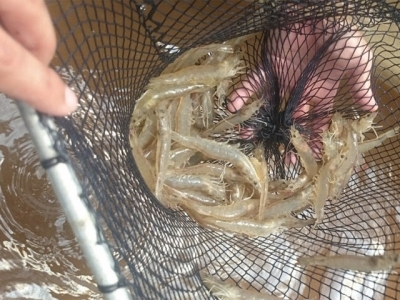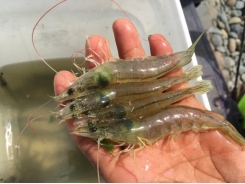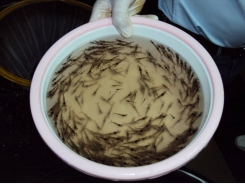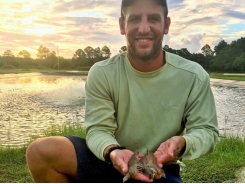Performance of Pacific white shrimp in biofloc with different light regimes

Animals exposed to light had better zootechnical parameters than those with reduced or no exposure
This study evaluated the zootechnical performance of Pacific white shrimp under different experimental light regimes.
Biofloc consist of aggregates colonized by microalgae, bacterial community, protozoan, zooplankton, nematodes, as well as feces and uneaten food. When formed, they can serve as a complementary food source for reared organisms benefiting from the natural productivity, which is reflected on improved growth, weight gain, feed conversion and survival.
A biofloc technology system is one designed to increase productivity while improving the environmental control over production, and has reduced water exchange and less effluent, uses smaller areas of culture and reduces the spread of diseases. Thus, it increases biosecurity and also reduces feed-related costs.
Biofloc technology and light
In a biofloc system, several changes occur during the cycle of culture, especially when exposed to sunlight because it can abruptly change from a predominantly algal system to a bacterial (mainly heterotrophic) system.
In general, the biofloc system can be exposed to natural light (outdoor ponds) or have a limited exposure to natural light (indoor tanks). In addition to being necessary for photosynthesis, light is considered an abiotic factor of great importance for the organisms that live in the system, several studies have shown significant differences in the behavior, growth, feed intake and reproduction of penaeid shrimp when exposed to different light conditions.
Most conventional systems are dominated by planktonic communities based on algae, (photoautotrophic), which are able to synthesize their own food using light energy. Thus, light is also a primordial source for photoautotrophic organisms and can be considered a limiting factor in the photosynthetic process and consequently in the primary production of the culture. The luminous intensity when appropriate provides advantages such as reducing production costs, food, electricity and increased productivity.
Most research on biofloc systems has been carried out in greenhouses in tropical or subtropical regions with an abundance of natural light. But it is also important to know the functionality of the biofloc system in conditions without, or with reduced light. The goal of our study was to evaluate the zootechnical performance of Pacific white shrimp (Litopenaeus vannamei) in tanks in a biofloc system with light restriction.

View of some the experimental tanks used in the study.
Study setup
Our study was carried at the Marine Station of Aquaculture, of the Institute of Oceanography, Federal University of Rio Grande, RS, Brazil. The experimental units consisted of 12 800-liter tanks, distributed in the following treatments and with four replicates each: 24 hours dark, where tanks were covered (T1); 24 hours light, where at night tanks were illuminated by artificial light (T2); and natural photoperiod (T3). The stocking density was 500 animals per cubic meter (mean weight 0.053 grams) and the feeding rate used was based on Jory et al. (2001) and Garza de Yta et al. (2004). However, 10 percent of the daily feed was applied using circular feeding trays, to monitor and control feed consumption.
Measurements of ammonium (TAN) were performed every day, and fertilization with sugar cane molasses was conducted when ammonia levels reached 1.0 mg/L. Organic fertilization with molasses targeted a C:N ratio of 6:1, as suggested by Avnimelech (1999) and Ebeling et al. (2006). Water temperature, dissolved oxygen, pH and salinity were measured daily, as well as total suspended solids (TSS) and biofloc volumes (using Imhoff cones). The light intensity (LUX) was measured every day at 12 p.m.

Measuring light intensity over an experimental tank.
A commercial probiotic (INVE®) was added to the water at 0.5 ppm/week and to the feed at 3 g/kg of the diet. Nitrite, nitrate and chlorophyll a were analyzed every three days. Shrimp were sampled weekly to determine their growth and at the end of the experiment to determine their survival. All results were analyzed by one-way ANOVA (α=0.05).

View of the solids removal system in the experimental setup.

Measuring biofloc volumes using Imhoff cones.
Results
There were no significant differences for temperature, dissolved oxygen, pH, turbidity, total suspended solids, alkalinity and salinity; all these parameters were within normal ranges for the culture of L. vannamei. However, there was a significant difference for total ammonium (NH3) nitrogen and nitrite (NO2) (Fig. 1) and chlorophyll a (Fig. 3). Every time when nitrite concentrations surpassed 25 mg/L, 20 percent of the water volume in tanks was exchanged, especially in treatments exposed to light (T2 and T3).

Fig. 1: Mean values (± SD) of ammonia and nitrite (mg/L) in the three experimental treatments exposing L. vannamei cultured in a biofloc system to different light intensities.

Fig. 2: Mean values (± SD) of nitrate (mg/L) in the three experimental treatments exposing L. vannamei cultured in a biofloc system to different light intensities.

Fig. 3: Mean values (± SD) of chlorophyll a (µg/L) in the three experimental treatments exposing L. vannamei cultured in a biofloc system to different light intensities.
The results also showed significant differences regarding zootechnical parameters (Table 1). The treatments with the presence of light (T2 and T3) showed better results for feed conversion rate (FCR), weekly growth rate (WGR), final biomass and final weight (Figs. 3 and 4).
Gomes, biofloc, Table 1
| Parameters | Natural photoperiod | 24-hour light | 24-hour dark |
| Initial weight (g) | 0.053±0.0 | 0.053±0.0 | 0.053±0.0 |
| Final weight (g) | 8.63±1.16a | 7.60±0.88a | 5.48±1.56b |
| Survival (%) | 90.0±38.53 | 91.0±10.5 | 71.0±41.84 |
| Biomass (kg/m3) | 4.66±.0.32a | 4.27±0.08a | 2.60±0.63b |
| FCR | 1.31±0.07a | 1.39±0.15a | 2.09±0.89b |
| Weekly growth rate (g) | 0.86±0.116a | 0.75±0.08ab | 0.54±0.156b |
| Weekly growth rate, grow-out phase (g) | 1.18±0.18 | 0.99±0.14 | 0.71±0.314 |
Table 1. Zootechnical parameters from the experiment.

Fig. 4: Mean values (±SD) of L. vannamei weights (grams) in the three experimental treatments with different light intensities in the nursery and grow-out phase.

Fig. 5: Food conversion rate (FCR) of L. vannamei at different luminous intensities in a 70-day in the nursery and grow-out phase experiment.
Perspectives
The present study demonstrated that the production of Litopenaeus vannamei exposed to light presented significantly better results of zootechnical parameters probably to due food availability in these treatments. We are currently analyzing the microbial community in the different treatments in order to elucidate the observed differences.
References available from corresponding author.
Author: Wellica Gomes dos Reis; Wilson Wasielesky Jr., Ph.D; Paulo Cesar Abreu, Ph.D; Dariano Krummenauer, Ph.D.
Có thể bạn quan tâm
Phần mềm

Phối trộn thức ăn chăn nuôi

Pha dung dịch thủy canh

Định mức cho tôm ăn

Phối trộn phân bón NPK

Xác định tỷ lệ tôm sống

Chuyển đổi đơn vị phân bón

Xác định công suất sục khí

Chuyển đổi đơn vị tôm

Tính diện tích nhà kính

Tính thể tích ao hồ




 Comparing salinities in intensive, commercial-scale biofloc for Pacific…
Comparing salinities in intensive, commercial-scale biofloc for Pacific…  Automated feeding systems in pond production of Pacific…
Automated feeding systems in pond production of Pacific…